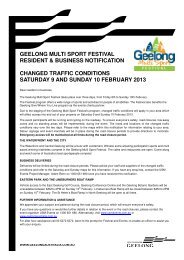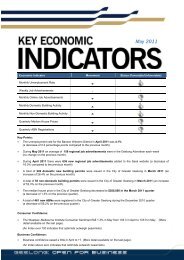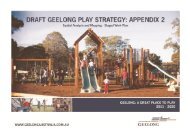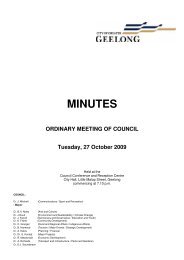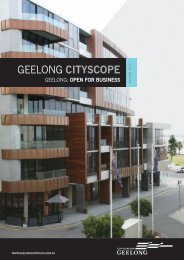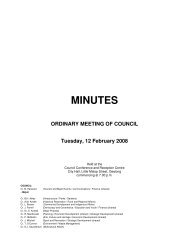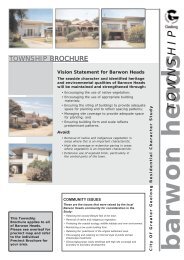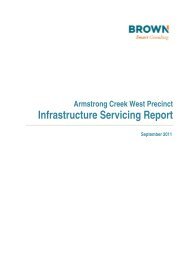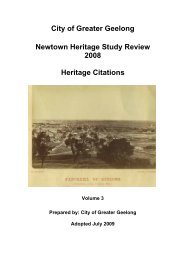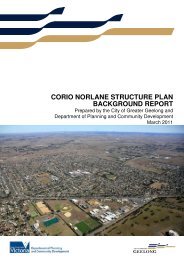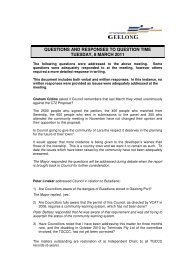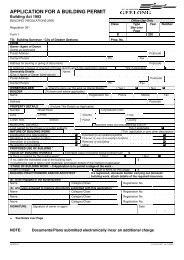ANNUAL REPORT 2007-2008 CITY OF GREATER GEELONG
ANNUAL REPORT 2007-2008 CITY OF GREATER GEELONG
ANNUAL REPORT 2007-2008 CITY OF GREATER GEELONG
You also want an ePaper? Increase the reach of your titles
YUMPU automatically turns print PDFs into web optimized ePapers that Google loves.
<strong>CITY</strong> <strong>OF</strong> <strong>GREATER</strong> <strong>GEELONG</strong> <strong>ANNUAL</strong> <strong>REPORT</strong> <strong>2007</strong>-<strong>2008</strong><br />
Challenges<br />
A feasibility study on the establishment of a centralised<br />
biotechnology laboratory in Geelong has found that<br />
demand for laboratory space was growing and there were<br />
significant job increases in the bio-sciences field.<br />
The study, commissioned by the City on behalf of the<br />
BioGeelong network, found that although it is difficult<br />
to define the level of demand for such a facility at the<br />
moment, the concept of a BioGeelong Central Laboratory<br />
is worth pursuing in the future. The challenge now is for<br />
the local biotechnology sector, through the BioGeelong<br />
network, to build its profile with a view to attracting<br />
investment.<br />
The region’s education levels are lower than the average<br />
for Victoria and Australia in all but the trades. Skills gap<br />
analysis also shows significant gaps in current industry<br />
needs. The G21 Lifelong Learning Pillar is pursuing a<br />
number of actions to better engage the community in<br />
formal and informal learning including education and<br />
training for marginalised industry sectors, reskilling and<br />
youth unemployment initiatives.<br />
Did you know...<br />
The Geelong region has 71 primary<br />
schools, 24 secondary schools across<br />
30 locations, and 49 kindergartens.<br />
101<br />
City Learning and Care, Ariston House



